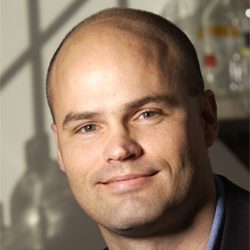
There’s depression, and then there’s double depression.
Sound bad? It is, according to Thomas Joiner, Florida State University Distinguished Research Professor and the Bright-Burton Professor of Psychology, who has identified hopelessness as a distinguishing feature of double depression in a new paper published in the Journal of Affective Disorders. The finding could help therapists diagnose and treat the mood disorder.
Double depression occurs when an individual who suffers from dysthymia, a persistent case of mild depression marked by low energy, falls into a major depressive state. It is not a new concept, but psychologists know little about the characteristics that distinguish double depression from dysthymia or major depression alone, according to Joiner.
"It’s clinically important because it is under-recognized and harder to treat than either dysthymia or major depression by themselves," Joiner said. "The hopelessness result is significant, and it suggests that therapists should especially focus on this feature early and often in the treatment of double-depressed patients."
Joiner, along with FSU doctoral student Kathryn Gordon, Joan Cook from the Veterans Affairs Medical Center in Philadelphia and Michel Herson from Pacific University in Oregon, studied the psychological assessments of 54 adults who entered a community-based psychiatric outpatient facility for non-psychotic adults ages 55 and older. Questionnaires were given to patients before starting treatment to measure depression, hopelessness, anxiety and their sense of control over their own lives.
They found that double-depressed patients had high levels of hopelessness, whereas patients with either major depression or dysthymia alone showed more moderate levels of hopelessness.
"A patient who is hopeless has really just given up," Joiner said. "They feel that the world is against them, the future is bleak and they are incapable of fighting back.
"This entrenched sense of hopelessness is one likely reason why double depression is so hard to treat, according to Joiner. The chronic nature of the underlying dysthymia is another.
"Any chronic condition is harder to treat than a less chronic one, and that is true for medical and psychiatric conditions alike," he said. "Second, people with dysthymia come to view depression as just part of who they are, and so they don’t come in to treatment as often, even when they dip down into a major depression. When they do come in, issues of motivation to do the treatment are common."
In addition to differences in the level of hopelessness, the researchers found that people with dysthymia alone and those with double depression felt little control over their own lives. People with these conditions felt that external forces—other people or fate—determined their future. Those suffering from major depression alone did not have this characteristic.
Joiner cautioned that the study’s findings must be interpreted in light of the study’s limitations, namely its small sample size. Still, the results could have important implications for treatment of double depression. Cognitive therapy, which focuses on changing negative thinking patterns, and antidepressant drugs are particularly helpful in treating symptoms of hopelessness and perceptions of a lack of control over one’s own life, he said.




